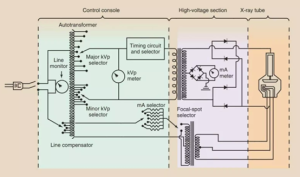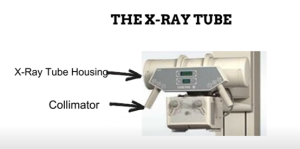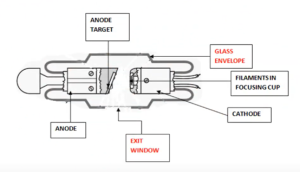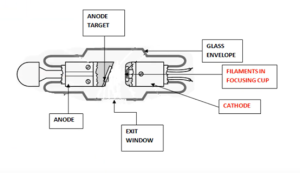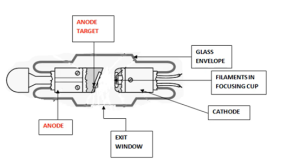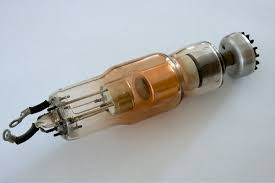X-rays are produced in an X-ray tube, which converts electrical input power into X-rays. The X-ray tube is an example of a vacuum tube.
X-ray Tube Circuit
The X-ray tube circuit provides stable current and voltage to accelerate the electron beam and generate X-rays. Its key components include high-voltage power supplies, current control circuits, transformers, accelerators, cooling systems, and protection circuits.
The input AC is converted into DC by a low-voltage circuit, providing stable 24V DC for the filament power supply and control system. The filament transformer converts the DC into low-voltage AC (e.g., 2.5V AC) for the filament. Through electromagnetic induction, the low-voltage AC is further stepped up to high-voltage AC, which is rectified and filtered to produce stable high-voltage DC to accelerate electrons and generate X-rays.
The control system in the X-ray tube circuit regulates voltage, current, and exposure time, providing safety protection, real-time monitoring of circuit status, and preventing abnormal situations such as overvoltage, overcurrent, or overheating, thus protecting the X-ray tube and circuit components. It also controls switching and interlocks, ensuring the equipment operates only under safe conditions, such as door interlocks and temperature sensors.
In integrated X-ray sources, the filament transformer, high-voltage transformer, and X-ray tube are often placed inside a sealed oil tank. The insulation oil enhances the insulation between high-voltage components and the outer shell, preventing arcing or short circuits. The oil also absorbs the heat generated by the X-ray tube and transformer during operation. Sealing key components in the oil tank isolates them from external dust, moisture, and contaminants, extending the equipment’s lifespan.
X-ray Tube Parts and Functions
X-ray Tube Housing
The X-ray tube is enclosed in a cylindrical housing made of steel. Its main role is to protect the X-ray tube from physical damage. Additionally, it serves as a radiation shield, preventing uncontrolled leakage of X-rays to ensure the safety of operators and the surrounding environment. The housing’s heat dissipation system also helps in cooling, extending the tube’s lifespan.
X-ray Tube Collimator
Located in the lower box structure of the equipment, the collimator restricts the X-ray beam’s range and direction, ensuring it is focused on the target area and preventing radiation from scattering to non-target regions. The collimator can adjust the shape of the beam to fit various applications (e.g., rectangular, circular) and reduce radiation leakage to protect the staff and surrounding environment. In dual-energy X-ray applications, the collimator optimizes the X-ray paths for both energy modes.
Glass Envelope of X-ray Tube
The X-ray tube is surrounded by a glass envelope, usually made from Pyrex glass. Its role is to ensure the tube remains in a vacuum, which is crucial for efficient X-ray production. The vacuum prevents the loss of energy and reduces the absorption of X-rays by air.
X-ray Tube Window
Although the glass envelope is thick, there is a thinner section through which the X-rays exit the tube. This section is called the X-ray tube window. The thicker parts of the envelope absorb off-focus radiation, while the thinner window allows useful X-rays to pass through.
X-ray Tube Components
Cathode
The cathode consists of two main parts: the filament and the focusing cup. The filament, typically made of tungsten, emits electrons when heated by current, a process called thermionic emission. The focusing cup, which can hold one or two filaments, is a metal structure that focuses the electron beam onto a specific area of the anode target, improving X-ray concentration and reducing electron scattering.
Anode
The anode has a designated surface called the X-ray tube focal spot. The electrons produced by the cathode are directed to this spot on the anode, where they collide and generate X-rays. The focal spot is the small region where the electron beam strikes the anode target, making it the primary location for X-ray production. The anode target material and design directly influence the X-ray tube’s performance, lifespan, and imaging quality. Tungsten is commonly used for the anode because of its high atomic number (74), which increases the likelihood of generating useful X-rays, and its high melting point (3000°C), which prevents the anode from melting due to the immense heat generated during electron collisions. Tungsten also has excellent thermal conductivity, which helps dissipate heat.
Research has shown that a larger focal spot distributes heat over a larger surface area, reducing the risk of tube damage. However, larger focal spots may reduce image clarity. To address this, the line-focus principle is used, where the anode target surface is tilted at a small angle, reducing the effective focal spot size while allowing for a larger actual focal spot to dissipate heat.
Other Components
- Window
The window, usually made of beryllium, aluminum, or copper, filters out low-energy (soft) X-rays. These low-energy X-rays cannot penetrate the patient to reach the detector and only contribute to unnecessary radiation exposure. Removing them reduces the dose of useless radiation. - Filter
Beryllium is commonly used for window material due to its excellent transmission of high-energy X-rays. For X-ray devices operating above 110 kV, the total filtration must be at least 2.5 mm of aluminum equivalent, which is the filtering effect equivalent to 2.5 mm of aluminum thickness.
FAQ
Which X-Ray Tube Component Serves as A Source Of Electrons For X-Ray Production?
The source of electrons in the X-ray tube is the cathode.
Why Use Tungsten in X-Ray Tube?
- High Atomic Number
- High Melting Point
- Good Thermal Conductivity

